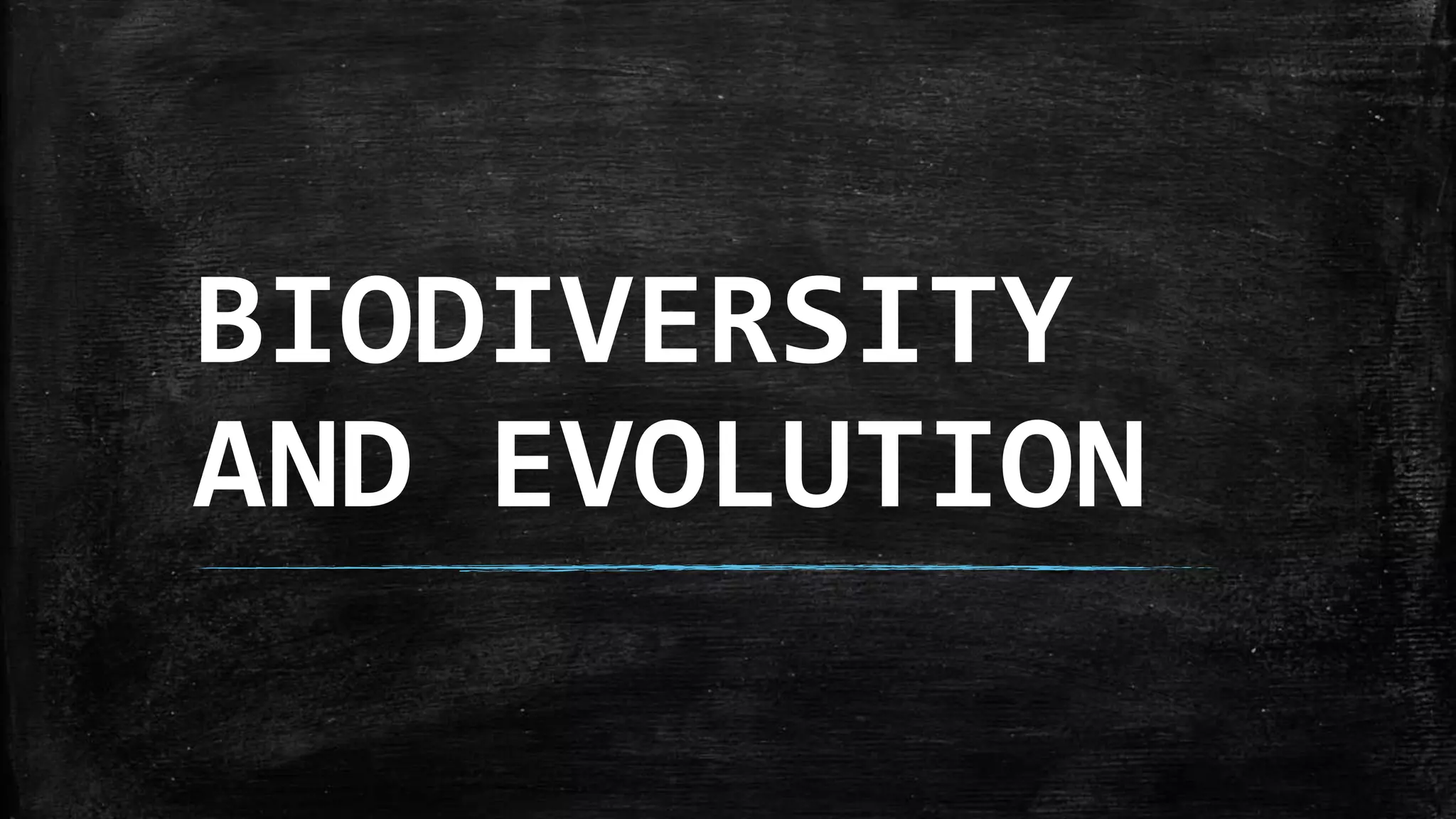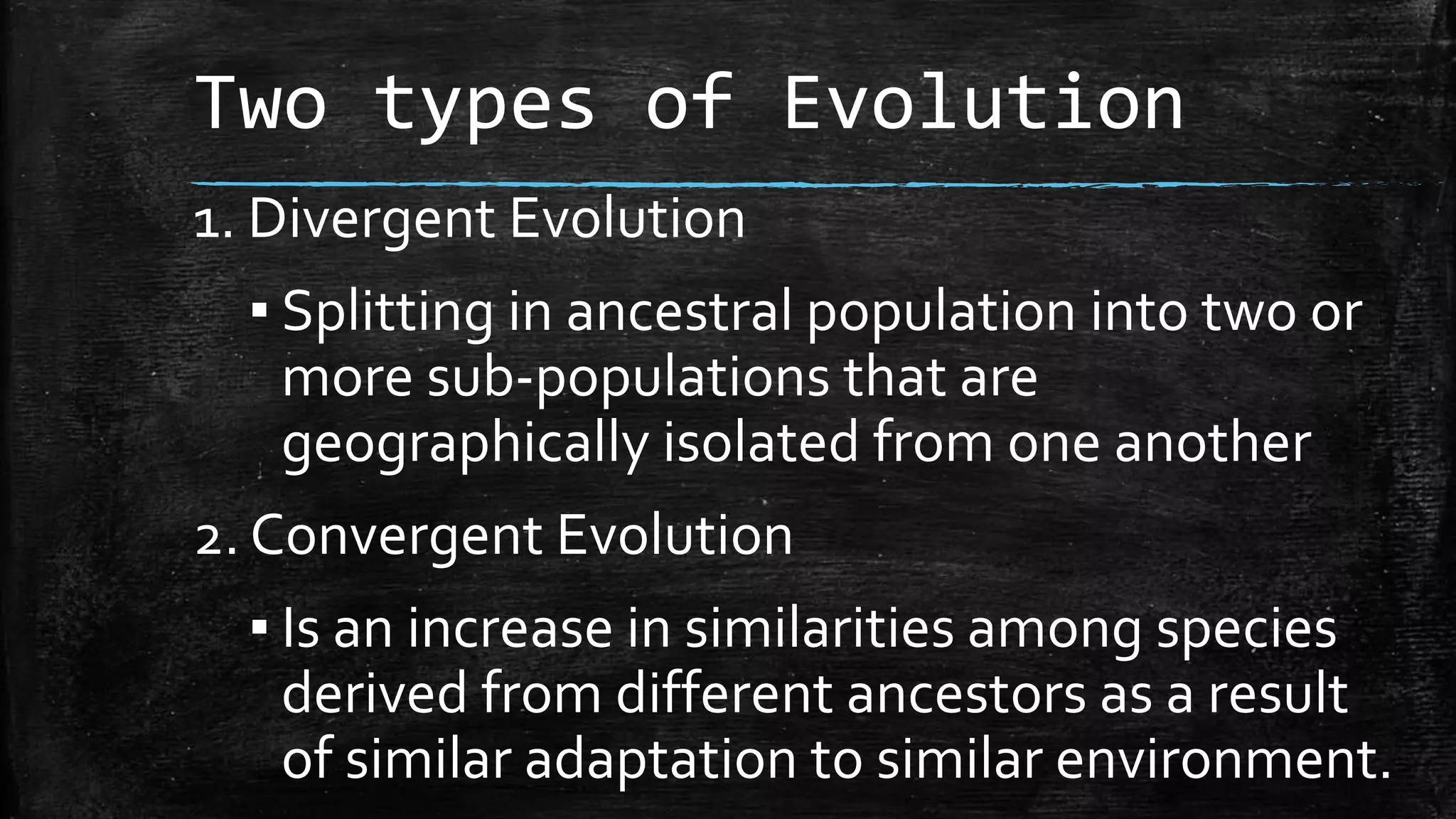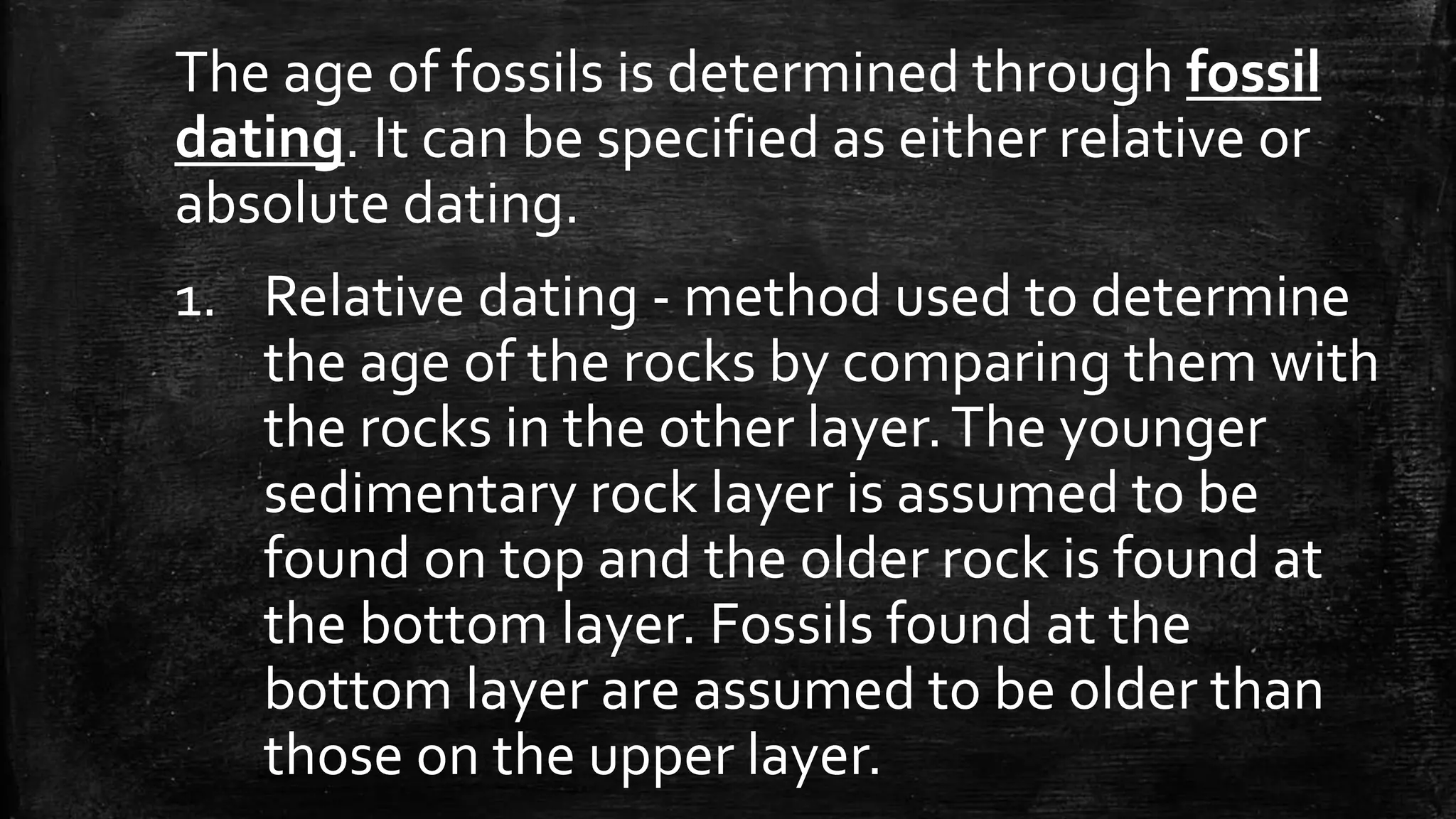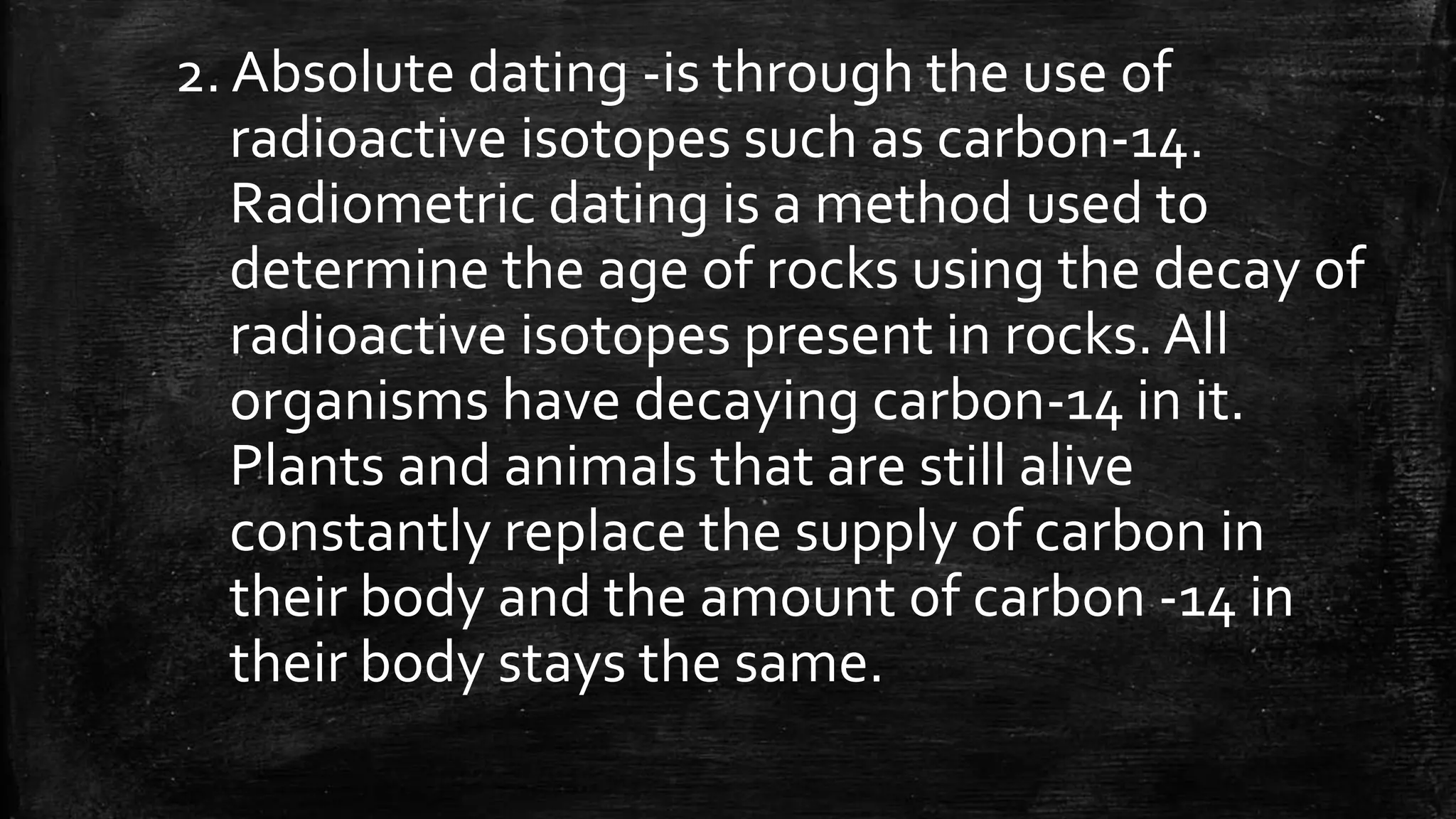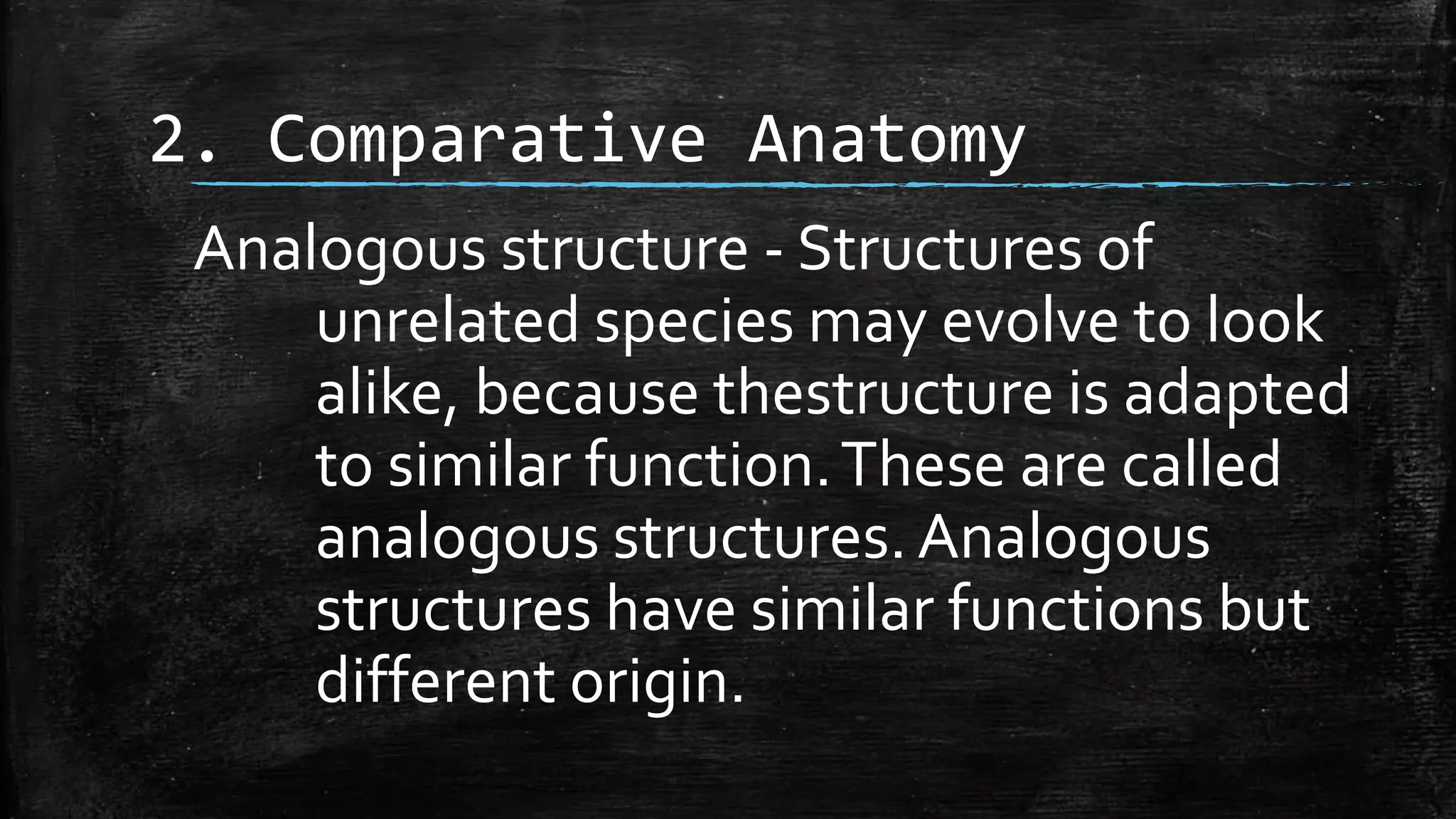This document discusses evidence for evolution from fossil records, comparative anatomy, and genetics. It explains two types of evolution: divergent evolution which causes populations to split into new species, and convergent evolution which causes unrelated species to evolve similar traits from adapting to similar environments. Evidence comes from homologous and analogous structures found in fossils and between species, similarities in embryonic development, and identical amino acid sequences between proteins of different species. Early theories of evolution from Jean Baptiste Lamarck and Charles Darwin are also summarized, including Lamarck's theory of acquired characteristics and Darwin's theory of natural selection.


